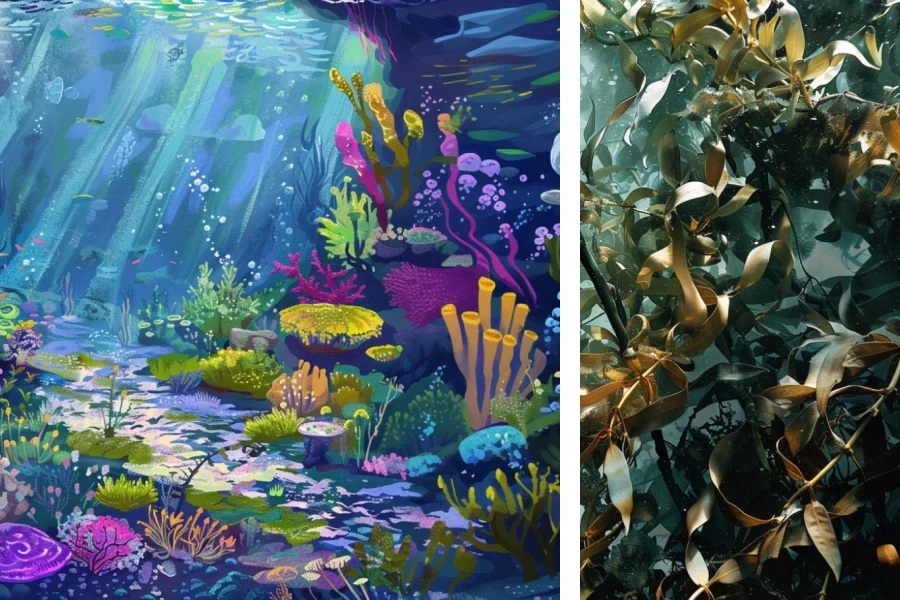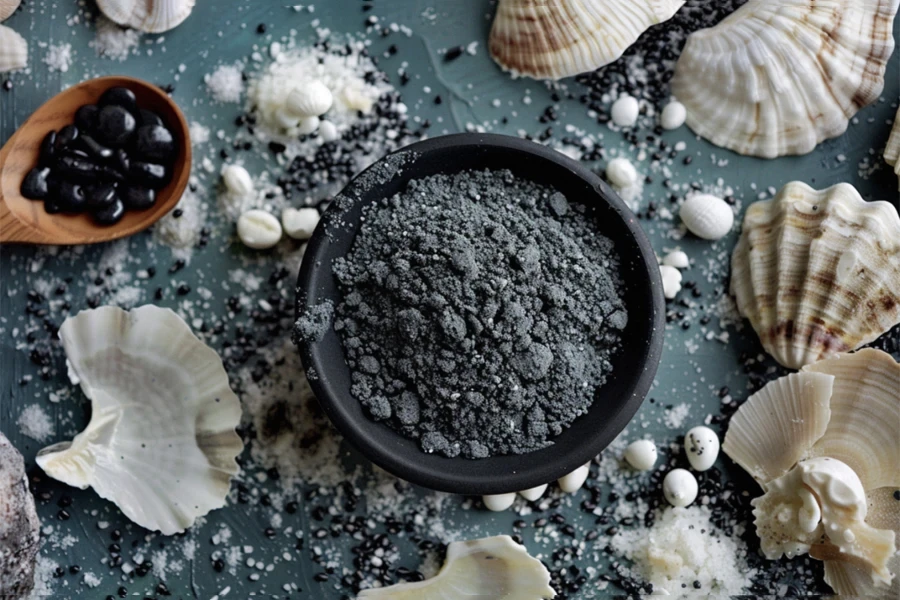The beauty industry is poised at the brink of a revolutionary shift with Blue Ingredients 2.0, drawing from the vast, untapped ecosystems of our oceans. This concept not only revisits traditional ingredients like algae and seaweed but also introduces groundbreaking elements such as sea mud and sea fungi. Highlighting sustainability and innovation, this new wave promises to redefine skincare and personal care products, emphasizing eco-friendly practices and advanced biotechnologies.
Exploring New Marine Ingredients
The quest for innovative cosmetic ingredients has led the beauty industry to the vast and largely untapped marine ecosystems. This new generation, termed Blue Ingredients 2.0, expands beyond traditional marine extracts like algae and seaweed to embrace more unconventional sources such as sea mud and sea fungi.

Traditional vs. New Marine Ingredients
- Traditional Marine Extracts: Historically, marine-based ingredients in cosmetics have predominantly included algae, seaweed, and marine collagen. These ingredients are prized for their moisturizing, anti-inflammatory, and anti-aging properties.

- Blue Ingredients 2.0: The new wave of marine ingredients extends to lesser-known marine resources like sea mud, rich in minerals and beneficial microorganisms, and sea fungi, which can offer unique bioactive compounds. This category also includes deep-sea bacteria and biotechnologically engineered substances like Lubrizol’s Seacode.
Key Innovations and Examples
- Lubrizol’s Seacode: Seacode is a biotechnological ingredient derived from deep-sea bacteria. It has been engineered specifically to enhance collagen production, which is vital for maintaining skin elasticity and reducing the signs of aging. Seacode represents a significant advancement in marine biotechnology and offers a high-tech solution for skin health (Lubrizol) (cosmeticsdesign.com).
Benefits of New Marine Ingredients
- Potency and Effectiveness: These novel ingredients often contain high levels of bioactive compounds that are beneficial for the skin. For example, sea mud is rich in minerals that can detoxify and rejuvenate the skin, while sea fungi can provide unique peptides and polysaccharides that help in skin repair and hydration.
- Sustainability: Many new marine ingredients can be sourced sustainably, reducing the environmental impact compared to terrestrial alternatives. For example, ingredients like algae can be cultivated in controlled environments, minimizing the strain on natural ecosystems.

Scientific and Consumer Interest
- Scientific Advancements: The development of new marine ingredients is driven by advancements in marine biotechnology and marine pharmacology. These fields explore the potential of marine organisms in providing novel compounds for various applications, including cosmetics.
- Consumer Demand: There is a growing consumer interest in natural and sustainable beauty products. Consumers are increasingly aware of the environmental impact of their purchases and are seeking products that are both effective and eco-friendly. This trend is driving the demand for innovative marine-based ingredients.
Sustainable Sourcing and Environmental Impact
With the ocean as a new frontier for raw materials, the cosmetic industry is also reevaluating its impact on marine environments. The emphasis is now on sustainable sourcing practices that avoid depleting natural ecosystems. Brands are increasingly aware of their environmental responsibilities and are adopting methods that minimize negative impacts. Upwell Cosmetics, for example, utilizes algae grown in vertical bioreactors, which require significantly less land and produce a substantial environmental benefit by absorbing 50 times more carbon dioxide than terrestrial crops. This method not only provides an effective alternative to petrochemicals but also highlights the potential for cosmetic ingredients to aid in combating climate change. By prioritizing these sustainable practices, the industry not only ensures its future supply of raw materials but also contributes to the overall health of our planet.

Case Studies: Pioneering Brands and Their Contributions
Innovative brands are already making significant strides by incorporating Blue Ingredients 2.0 into their product lines. Finnish brand Origin by Ocean is addressing environmental challenges directly by transforming problematic algae and seaweed blooms into valuable cosmetic ingredients and packaging. This not only helps clean up marine ecosystems but also repurposes what would otherwise be waste materials into high-value products. In the U.S., MARA Beauty is leveraging the power of regenerative practices by investing in the SeaTrees initiative, which focuses on reforesting ocean kelp. Kelp forests are crucial as they act as significant carbon sinks and help restore marine biodiversity. These case studies exemplify how the beauty industry can drive environmental sustainability while innovating product development, setting a benchmark for others in the sector.
Consumer Trends and Preferences
Consumers are increasingly prioritizing sustainable and eco-friendly beauty products. Surveys and market research show a growing demand for products with natural, ocean-derived ingredients. Brands that emphasize transparency and sustainability in their sourcing and production processes are likely to gain more consumer trust and loyalty. This trend is especially strong among younger generations who are more environmentally conscious and willing to invest in sustainable beauty solutions.

Technological Innovations in Extraction and Formulation
Technological advancements play a crucial role in the extraction and formulation of marine ingredients. New methods such as low-temperature bioactive compound extraction and precision fermentation ensure the potency and efficacy of these ingredients while maintaining sustainability. These technologies not only enhance the functional benefits of marine-derived ingredients but also ensure that their extraction does not harm marine ecosystems.
Future Prospects and Trends
Looking ahead, the beauty industry is likely to explore even more diverse and unconventional marine ingredients. Biotechnological advancements will continue to play a significant role in this exploration. Additionally, brands are expected to expand their product lines to include a wider range of climate-responsive and environmentally sustainable cosmetics. The integration of these innovative ingredients into mainstream beauty products will set new standards for efficacy and sustainability in the industry.

Conclusion
As the beauty industry embarks on this exciting journey with Blue Ingredients 2.0, it stands at the intersection of innovation and sustainability. By harnessing the unique and potent properties of marine-derived ingredients, brands are not only pushing the boundaries of cosmetic efficacy but are also setting new standards for environmental responsibility. The integration of ingredients like sea mud, sea fungi, and biotech advancements such as Seacode represents a promising future that balances consumer desires with ecological health. As more companies follow in the footsteps of pioneers like Upwell Cosmetics and Origin by Ocean, the potential for a sustainable, eco-friendly approach in beauty products becomes increasingly attainable. This shift is not just a trend but a transformative movement towards a more sustainable and conscientious global beauty industry.




